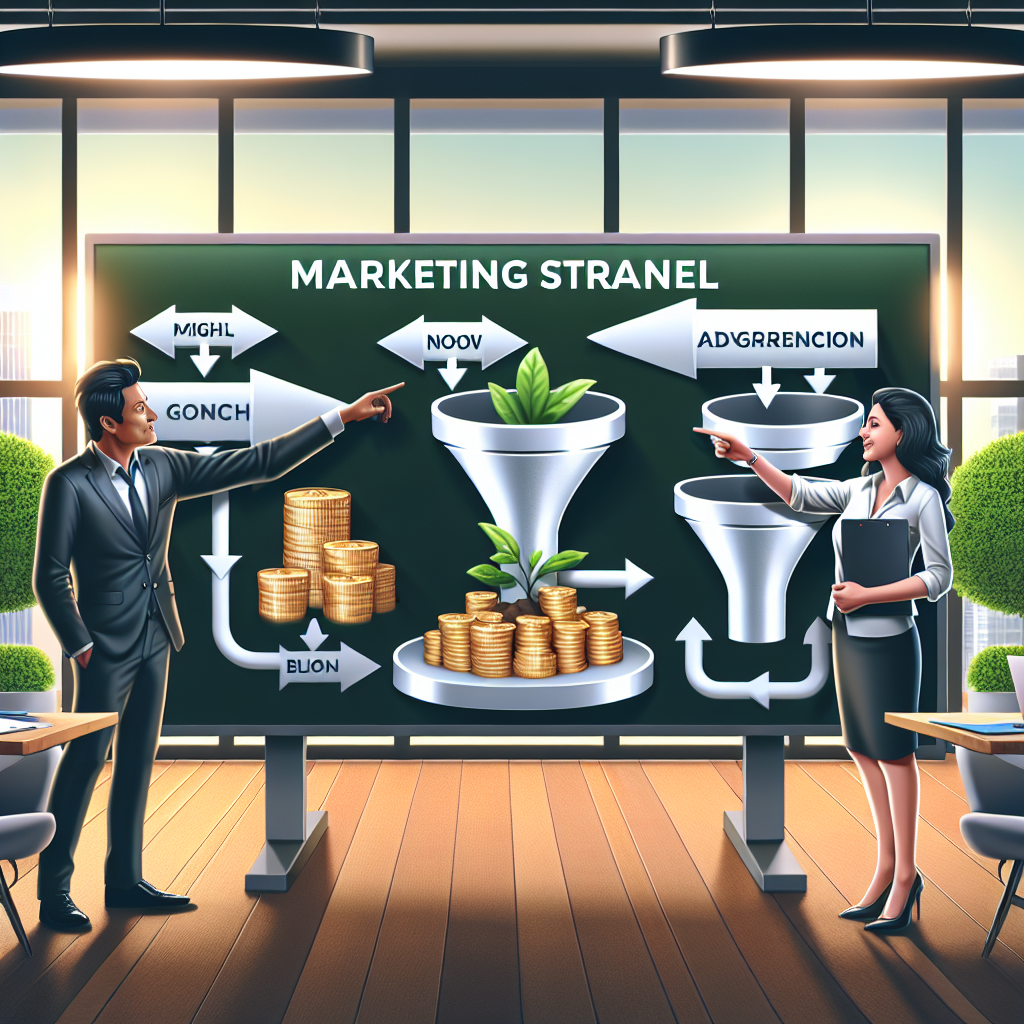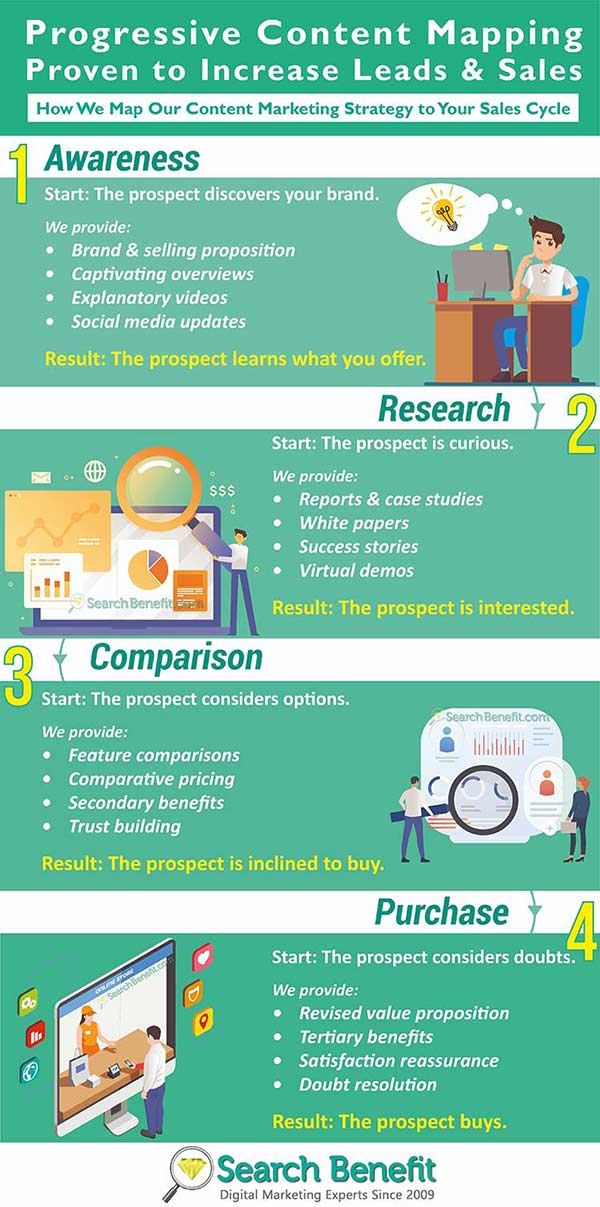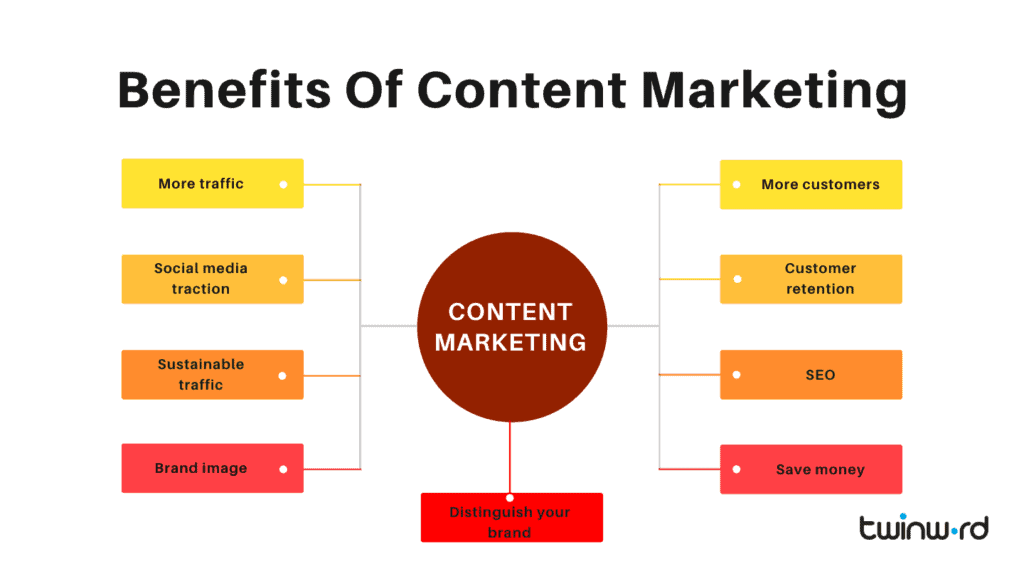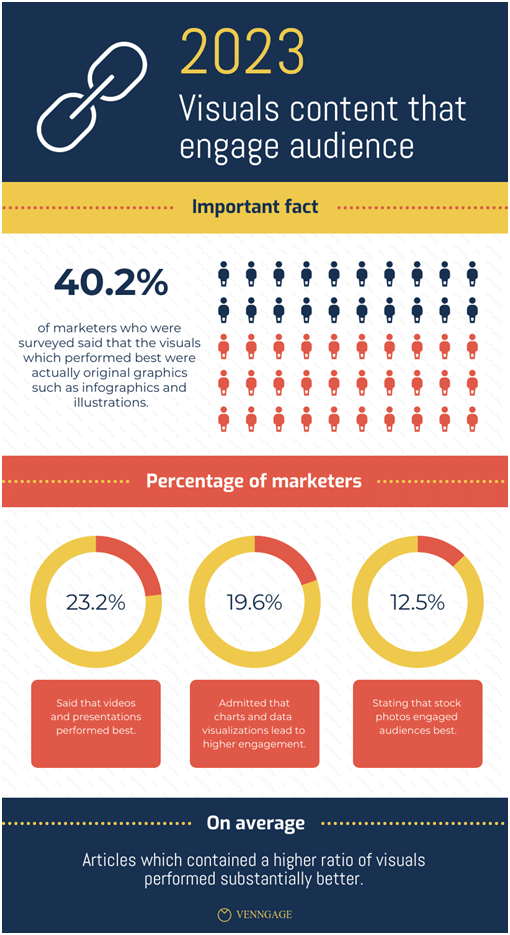Uncover the secrets of successful content marketing. Learn key benefits and strategies to skyrocket your brand’s online presence today!

Image courtesy of via DALL-E 3
Table of Contents
- Introduction to Content Marketing
- The Benefits of Content Marketing
- Types of Content Used in Content Marketing
- Planning a Content Marketing Strategy
- Creating High-Quality Content
- Sharing and Promoting Content
- Measuring Content Marketing Success
- Examples of Successful Content Marketing
- Conclusion
- Frequently Asked Questions (FAQs)
Introduction to Content Marketing
Content marketing is a powerful tool that businesses use to connect with their audience, build trust, and ultimately drive sales. In simple terms, content marketing involves creating and sharing valuable and relevant content to attract and retain customers. Let’s break down the key components of content marketing to understand how it works.
What is Content?
Content is the information and material that we see and interact with online. It can come in various forms such as videos, blog posts, social media updates, and more. For example, when you watch a fun DIY video on making slime or read an interesting blog post about your favorite video game, that’s all content!
What is Marketing?
Marketing is how businesses communicate with people to promote their products or services. It’s like telling others about a cool new toy you found or sharing a yummy recipe with your friends. Marketing helps businesses reach out to potential customers and show them why they should choose their products or services.
Putting It Together: Content Marketing
Now, imagine combining the fun and helpful content you enjoy with the clever ways businesses tell you about their products. That’s content marketing! It’s like when a company shares a funny video about their new toy or gives you tips on how to use a gaming console. Content marketing aims to provide value and engage with customers in a way that traditional advertising can’t.
The Benefits of Content Marketing
Content marketing offers a plethora of advantages for businesses looking to make a mark in the digital world. Let’s delve into the benefits that come with utilizing this powerful strategy.
Building Trust
One of the key benefits of content marketing is the ability to build trust with your audience. By sharing helpful and interesting content, businesses can establish themselves as experts in their field. When people trust a brand, they are more likely to engage with it and ultimately make a purchase.
Attracting New Customers
Quality content has the potential to attract new customers to a business. When you provide valuable information or solve a problem through your content, people are more inclined to seek out your products or services. This influx of new customers can help grow your business and increase your revenue.
Helping Customers
Content marketing is an excellent way to address the needs of your customers. By creating content that answers common questions or provides solutions to problems, you can establish a rapport with your audience and show them that you care about their concerns. This can lead to repeat business and loyal customers.
Boosting Sales
Ultimately, the goal of content marketing is to boost sales. By creating compelling content that resonates with your target audience, you can persuade them to take action, whether it’s making a purchase, signing up for a service, or subscribing to a newsletter. The more engaging and persuasive your content is, the more likely it is to drive sales.
Types of Content Used in Content Marketing
Content marketing uses various types of content to engage with audiences and convey messages effectively. Let’s explore some common forms of content used in content marketing:

Image courtesy of searchbenefit.com via Google Images
Blogs
Blogs are like online journals where businesses can share information, stories, and ideas with their audience. They are great for providing detailed insights, tips, and updates to keep readers informed and engaged.
Videos
Videos are dynamic and engaging tools used by businesses to showcase products, demonstrate services, or share stories. They can be entertaining, informative, or instructional, making them a powerful way to connect with audiences visually.
Social Media Posts
Social media platforms like Facebook, Instagram, and Twitter are popular spaces for sharing content. Businesses use these channels to communicate with their followers, share updates, and create buzz around their products or services.
Podcasts
Podcasts are audio recordings that allow businesses to reach audiences through spoken content like interviews, discussions, or storytelling. They are a convenient way for people to consume content while on the go.
Infographics
Infographics are visual representations of information, data, or knowledge. They combine text and images to convey complex ideas in a simple and engaging manner. Infographics are great for summarizing information or presenting statistics in an easy-to-understand format.
Planning a Content Marketing Strategy
Creating a successful content marketing strategy involves several essential steps to ensure that your content is effective in reaching and engaging your target audience. Let’s explore the key components of planning a content marketing strategy:
Setting Goals
Before diving into creating content, it’s crucial to establish clear goals for what you want to achieve with your content marketing efforts. Whether it’s increasing brand awareness, generating leads, or driving sales, having specific objectives will guide your content creation process.
Knowing Your Audience
Understanding your target audience is fundamental to creating content that resonates with them. By identifying their needs, preferences, and pain points, you can tailor your content to provide value and address their specific concerns.
Choosing Topics
When selecting topics for your content, consider what matters most to your audience and what information or solutions they are seeking. Make sure your topics are relevant, interesting, and align with your overall business objectives.
Creating a Schedule
Consistency is key in content marketing. Develop a content calendar that outlines when and where you will publish your content. By adhering to a schedule, you can maintain a steady flow of fresh content and keep your audience engaged.
Reviewing and Adjusting
Regularly evaluate the performance of your content to see what’s working and what’s not. Analyze metrics such as engagement, website traffic, and conversions to determine the effectiveness of your content marketing strategy. Based on this data, make necessary adjustments to optimize your results.
Creating High-Quality Content
Before you start writing, it’s essential to research your topic. Research helps you gather accurate information and make sure your content is reliable and trustworthy. Look for reputable sources like books, articles, and websites to gather facts and data.

Image courtesy of www.frac.tl via Google Images
Writing Tips
When writing, keep your sentences short and to the point. Use simple language that is easy to understand. Start with an introduction to grab the reader’s attention, then explain your main points clearly in the body of the content. Finally, end with a conclusion that summarizes the key takeaways.
Using Images and Videos
Images and videos can make your content more engaging and visually appealing. Including visuals can help break up text, making it easier for readers to digest information. Be sure to use high-quality images that are relevant to your topic and add value to your content.
Editing and Proofreading
After writing your content, take the time to edit and proofread it carefully. Check for grammar and spelling errors, and make sure your sentences flow smoothly. It’s a good idea to have someone else read over your content as well to catch any mistakes you might have missed.
Sharing and Promoting Content
Once you’ve created high-quality content, the next step is to share it with the world. Sharing and promoting your content is crucial to reaching a wider audience and driving traffic to your website. Let’s explore some effective strategies for getting your content out there!
Social Media
Social media platforms like Facebook, Instagram, Twitter, and LinkedIn are excellent tools for sharing your content with a broad audience. You can create posts, share links, and engage with followers to drive traffic to your website. Be sure to use eye-catching visuals and catchy captions to grab the attention of your audience.
Email Marketing
Another effective way to share your content is through email marketing. By sending newsletters or updates to your subscribers, you can notify them of new content and encourage them to visit your website. Personalize your emails and include links to your latest posts to increase engagement.
Collaboration
Collaborating with influencers or other businesses in your industry can help you reach a new audience. By partnering with others who have a large following, you can leverage their reach to promote your content. Consider guest posting on blogs, participating in podcasts, or co-hosting events to expand your reach.
Paid Advertising
If you have the budget for it, paid advertising can be a powerful way to promote your content. Platforms like Google Ads, Facebook Ads, and Instagram Ads allow you to target specific audiences and drive traffic to your website. You can create engaging ads that showcase your content and encourage people to click through.
Measuring Content Marketing Success
Tracking and measuring the success of your content marketing efforts is crucial to understanding what is working well and where improvements can be made. By using analytics and key metrics, you can gain valuable insights into how your content is performing and make informed decisions to optimize your strategy.

Image courtesy of www.twinword.com via Google Images
Using Analytics
Analytics are tools that help you track various data points related to your content, such as the number of visitors to your website, the sources of traffic, and user behavior. By analyzing this data, you can determine which pieces of content are resonating with your audience and driving engagement. Platforms like Google Analytics provide detailed information on how users interact with your content, helping you make informed decisions based on real data.
Important Metrics
When measuring the success of your content marketing, there are several key metrics to consider. Views, shares, and comments are a few of the most important indicators of how well your content is performing. Views show how many people have seen your content, while shares indicate that your content is compelling enough for others to pass it along. Comments provide insights into how engaged your audience is with your content, offering valuable feedback and opportunities for interaction.
Getting Feedback
Asking for feedback from your audience is another valuable way to measure the success of your content marketing efforts. By listening to your viewers and understanding their needs and preferences, you can tailor your content to better serve them. Feedback can come in the form of comments, surveys, or direct messages, giving you valuable insights into what your audience likes and dislikes. Incorporating this feedback into your content strategy can help improve future content and drive even greater success.
Examples of Successful Content Marketing
Content marketing is a powerful strategy used by businesses, big or small, to reach and engage their target audience. Let’s take a look at some real-world examples of successful content marketing across different sectors.
Big Brands
Big companies like Nike, Coca-Cola, and Apple are known for their successful content marketing strategies. Nike, for instance, creates inspirational videos featuring athletes that not only promote their products but also embody the brand’s values of excellence and determination. These videos are shared on social media platforms and resonate with their audience, driving engagement and loyalty.
Small Businesses
Small businesses can also excel in content marketing. Take a local bakery, for example, that regularly shares recipe videos on social media platforms. By providing valuable content that showcases their products and expertise, they attract a loyal following that eventually translates into increased foot traffic and sales. Consistent, high-quality content has enabled many small businesses to compete with larger competitors on a digital playing field.
Non-Profit Organizations
Non-profit organizations leverage content marketing to raise awareness and support for their causes. Organizations like the World Wildlife Fund (WWF) publish engaging infographics and articles on their website and social media platforms to educate the public about environmental issues. By creating compelling content that resonates with their audience’s values, non-profits are able to inspire action, whether it’s through donations, volunteering, or advocacy.
Conclusion
In conclusion, content marketing is a powerful tool for businesses to connect with their audience, build trust, attract new customers, and boost sales. By creating high-quality content and effectively sharing it through various platforms, businesses can achieve great success in reaching their goals and growing their brand.

Image courtesy of visualmodo.com via Google Images
Recap of Key Points
Throughout this article, we’ve discussed the benefits of content marketing, various types of content used in marketing, strategies for planning and creating content, promoting content effectively, measuring success, and examples of successful content marketing campaigns. By understanding these key points and implementing them in their own strategies, businesses can see significant growth and engagement with their audience.
Encouragement to Start
If you haven’t already started with content marketing, now is the time to give it a try! Whether you’re a big brand, a small business, or a non-profit organization, content marketing can help you reach your goals and connect with your audience in meaningful ways. Don’t be afraid to experiment, learn, and grow with your content marketing efforts.
Want to turn these SEO insights into real results? Seorocket is an all-in-one AI SEO solution that uses the power of AI to analyze your competition and craft high-ranking content.
Seorocket offers a suite of powerful tools, including a Keyword Researcher to find the most profitable keywords, an AI Writer to generate unique and Google-friendly content, and an Automatic Publisher to schedule and publish your content directly to your website. Plus, you’ll get real-time performance tracking so you can see exactly what’s working and make adjustments as needed.
Stop just reading about SEO – take action with Seorocket and skyrocket your search rankings today. Sign up for a free trial and see the difference Seorocket can make for your website!
Frequently Asked Questions (FAQs)
What is Content Marketing?
Content marketing is a strategy that involves creating and sharing valuable content to attract and engage a specific audience. This content can come in various forms like articles, videos, social media posts, and more. The goal is to build relationships with customers and ultimately drive profitable customer action.
How Do I Start with Content Marketing?
To begin with content marketing, you can follow these simple steps:
1. Define your goals and target audience.
2. Create a content plan that aligns with your goals and audience’s needs.
3. Produce high-quality and relevant content consistently.
4. Share your content on different platforms to reach your audience.
5. Monitor and analyze the performance of your content to make improvements.
Is Content Marketing Expensive?
Content marketing can be tailored to fit any budget. While some aspects may require investment, such as hiring creators or promoting posts, there are also cost-effective ways to create and distribute content. The key is to focus on quality rather than quantity and prioritize strategies that yield the best results for your business.
How Long Does It Take to See Results?
Seeing results from content marketing can vary depending on various factors like the type of content, audience engagement, and consistency of efforts. Generally, it may take several months to start seeing significant results. Patience is crucial in content marketing as it often involves building trust and relationships with your audience over time.







